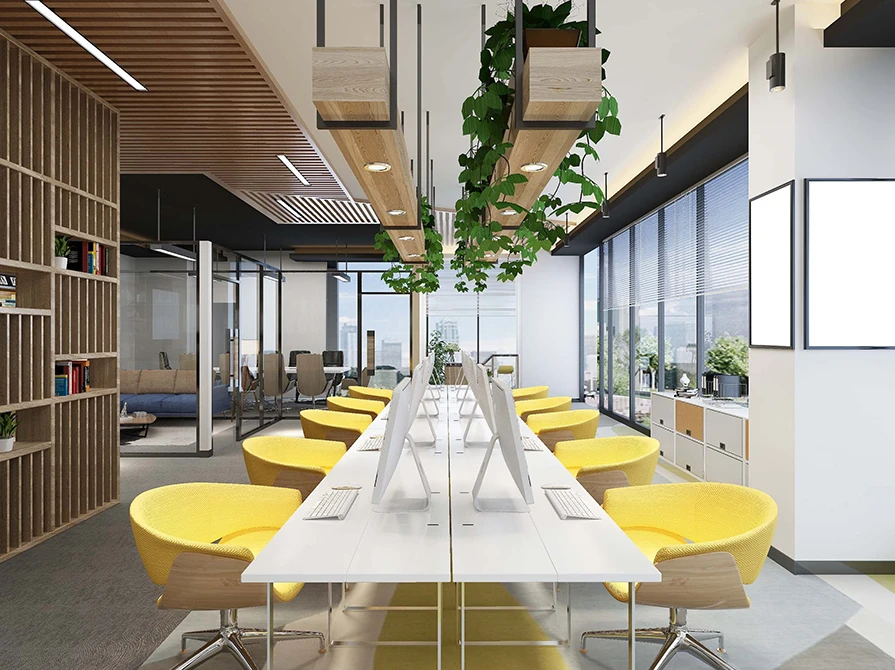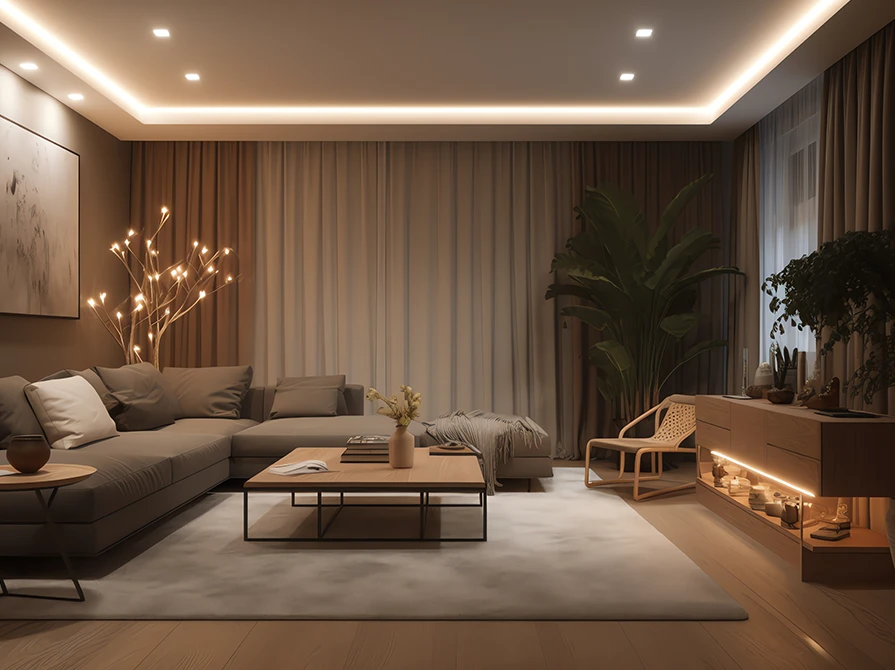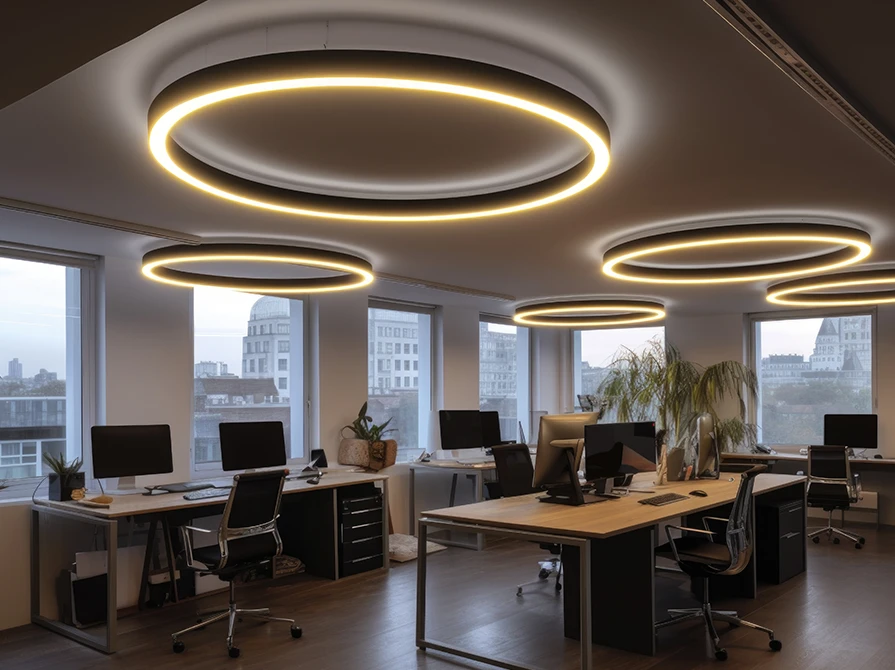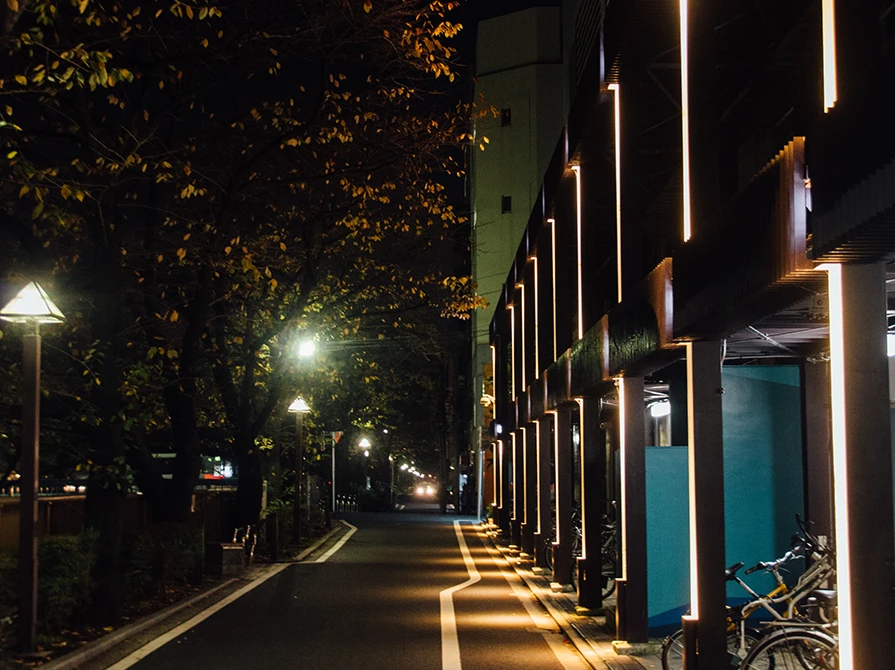

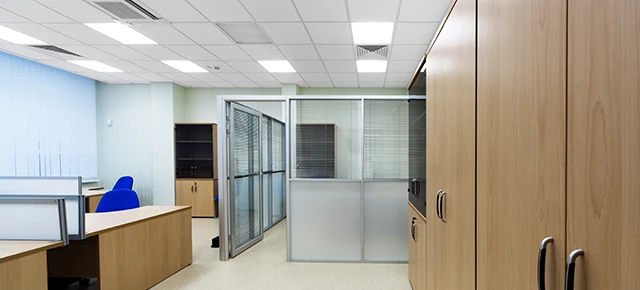
According to several surveys and studies, the average person spends almost 90,000 hours at work, which represents more than one-third of their lifetime spent working. However, the average time spent being productive is way less, despite the amount of time invested in working. There are a lot of prevailing factors contributing to the productivity of people in a workspace; the quality of office lighting is one of them.
Offices are infamously considered second homes for most of us, making lighting a vital factor in creating an ecosystem that stimulates focus, creativity, and overall health and wellness. Improved office lighting, especially in workspaces, has had a positive impact on the health and well-being of employees, leading to better work outcomes. The emphasis on creating more comfortable and healthier work environments through appropriate lighting has contributed to increased productivity and overall job satisfaction among employees.
The circadian rhythm of our bodies is influenced by lighting, which impacts our awareness and level of lethargy. As a result, we tend to be more active during the day and rest at night. It also affects our mood and body temperature, consequently affecting the overall energy of an individual.
Pleasing luminous light fixtures, for example, provide a refreshing environment that further helps encourage a good mood and provides stimulus for daily tasks. Dull lighting, on the other hand, can easily make the atmosphere gloomy, leading to decreased productivity and a lack of motivation. To optimize productivity in a workspace, it is essential to have high-quality lighting.
As fundamental as productivity is, it is equally necessary to consider your staff's health. Insufficient lighting, particularly in areas where individuals spend a significant amount of their time, can greatly impact their overall health and wellness. Prolonged exposure to dull light can reduce visibility, thus straining the eyes. Poor lighting is also linked to causing headaches, migraines, and affecting mental health.
A well-lit workplace with appropriate lighting can elevate the employee's general emotional health while also adding to their physical comfort and well-being. It has also been found that lighting can mildly reduce depression.
It's no wonder; a happy employee is an asset to the company. To avoid poor lighting in workspaces, here are a few tips to consider.
The type of lighting fixtures you choose to invest in will depend on the nature of your work. Commercial spaces, shops, and offices all have unique lighting requirements. Let us see the factors contributing to the selection of the right types of ceiling lights in offices.
Office space and height: One of the most fundamental factors in choosing the best ceiling light is a proper examination of your office space. How widespread is your natural light? If the source of natural light is limited, consider luminaires that spill into the entire room, evenly covering all the corners. Additionally, the height of the workspace plays a crucial role; if the ceiling is too close to the desk, the light fixtures cannot be too bright or direct.
Brightness: The intensity of light, as discussed above, directly affects the productivity and well-being of the employees. Dim-lit workspaces can negatively alter the mood and hurt the eyes, while a well-lit room will elevate the mood. Notably, when the space is lit up too brightly, it can add to the glare, thereby causing visual discomfort.
Colour and temperature: Neutral and cool colour lights are considered to be the most appropriate settings when choosing office lights. Blue light particularly is associated with being awake and enhanced productivity, whereas warm tones are considered more relaxed and sleep-inducing.
Desk placements to avoid glare: When setting up the office ceiling lights, it is very important to examine the placement of desks and tables. Light fixtures cannot be placed in a way that strains the eyes or causes the computer screens to glare.
Incandescent vs Fluorescent vs LED: When it comes to ceiling lights, LED lights are a great option. They are brighter, more energy-efficient, and more durable than incandescent or fluorescent lights. While they may be more expensive, in the long run, they are the most effective and long-lasting choice.
Controls: Having lights that can be adjusted for brightness and colour is definitely a useful feature. When employees are able to choose their preferred lighting settings, they tend to work more effectively.
Aesthetics: It's important to consider the overall design architecture of your workspace before adding fancy luminaries. There are many contemporary designs available on the market, so it's worth finding out which fixtures work best for your office space.
There are various types of ceiling lights to consider when designing different office spaces:
Recessed fixtures or downlighters provide uninterrupted, bright light directly from the top, like spotlights, and can be a great choice for conference rooms and collaborative spaces. These lights provide ambient lighting and fit in with any kind of ceiling.
Suspended lights are visually appealing and add a lot of depth to huge spaces with tall ceilings. Modern LED panels can be suspended from the ceiling to enhance the aesthetics of workspaces.
Cove lights are the kind where the source of light is hidden; the fixtures go inside the false ceilings. The installation process is difficult and expensive, but using LED light sources makes them energy-efficient. Cove lights add a lot of aesthetic value to any workspace.
Flush-mount ceiling lights are installed directly into the ceiling and look like they're connected without any center stem. They are relatively less prone to dust and make cleaning much easier.
Semi flush-mount ceiling lights have a visible stem that is attached to the ceiling and have better ambience and design value. They can be a great addition to your reception and conference room spaces.
Choosing the appropriate ceiling lights for an office is a vital choice. It is important to consider factors such as lighting type, energy efficiency, colour temperature, and design to create a well-lit environment that promotes productivity, comfort, and employee well-being. As technology improves, office managers and decision-makers should stay up-to-date with the latest lighting trends and innovations to ensure their office spaces remain conducive to productivity and creativity.
